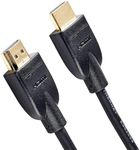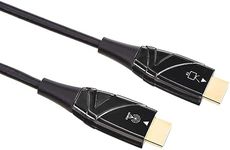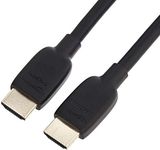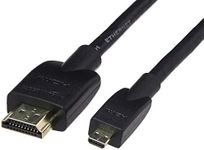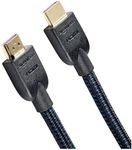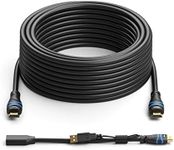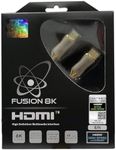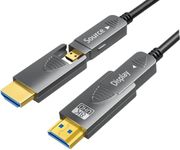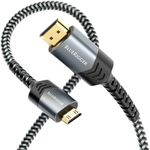Buying Guide for the Best Hdmi Cables
When shopping for an HDMI cable, it can be tempting to just pick up any option off the shelf. However, understanding a few basic specs will help you find a cable that fits your needs, ensures you get the best possible video and audio quality, and avoids future compatibility annoyances. Not all HDMI cables are created equal, and your choice should be based mostly on how you're using it and what kinds of devices you'll be connecting. Below, you'll find explanations to help you make the right decision.HDMI Version (Standard, High-Speed, Premium High-Speed, Ultra High-Speed)The HDMI version refers to the capability and bandwidth the cable offers. Standard HDMI cables are suitable for 1080i or 720p video, while High-Speed HDMI cables are needed for 1080p, 4K at 30Hz, and 3D video. Premium High-Speed cables handle 4K at 60Hz with high dynamic range (HDR), and Ultra High-Speed HDMI cables support up to 8K with higher refresh rates. To pick the right one, start by checking what your source device (such as a streaming box, console, or Blu-ray player) and your display (like a TV or monitor) can do. If you only need to connect basic HD devices, Standard or High-Speed will work. For 4K or future-proofing, opt for Premium or Ultra High-Speed.
Cable LengthCable length is just how long the HDMI cable is from end to end. Short cables are good for close connections (like connecting a console to a nearby TV), while longer cables are for setups where devices are far apart. However, the longer the cable, the more chance there is for signal loss, especially with cheaper cables. Generally, for distances up to about 3 meters (10 feet), almost all cables work fine. For longer runs (over 5 meters/16 feet), look for cables that are labeled for long-distance or consider active HDMI cables, which have built-in signal boosting. Always choose a length that gives you a bit of slack but isn’t excessively long for no reason.
Build Quality (Connector Type, Shielding, Flexibility)Build quality includes things like how sturdy the cable is, whether the connectors are gold-plated, and how flexible or thick the cable is. While gold-plating doesn’t affect signal quality much, it does resist corrosion better. Good shielding prevents interference from other electronics, which is helpful if you run your cable past a lot of power cords or devices. Flexibility matters if the cable will be bent or moved a lot. If your cable will stay plugged in behind a TV and rarely move, basic build is fine; for frequent plugging/unplugging or in cluttered environments, a tougher cable with good shielding and strain relief at the ends is a smart choice.
Compatibility and Features (ARC, eARC, Ethernet support, CEC)Some HDMI cables support extra features like Audio Return Channel (ARC) or enhanced ARC (eARC), which allow audio to flow both ways for home theater convenience, or built-in Ethernet which lets Internet signals travel through the HDMI cable (if both devices support it). CEC (Consumer Electronics Control) allows you to control multiple devices with one remote. Consider these only if your devices support and require these features; otherwise, a basic HDMI cable will cover just the video and audio needs.
Connector Size (Standard, Mini, Micro)HDMI cables come with different connector sizes: Standard (Type A) for TVs and most home devices, Mini (Type C) for some cameras/tablets, and Micro (Type D) for smaller gadgets. Always check what size port your devices have before buying, and make sure the cable matches or comes with an adapter if needed.
